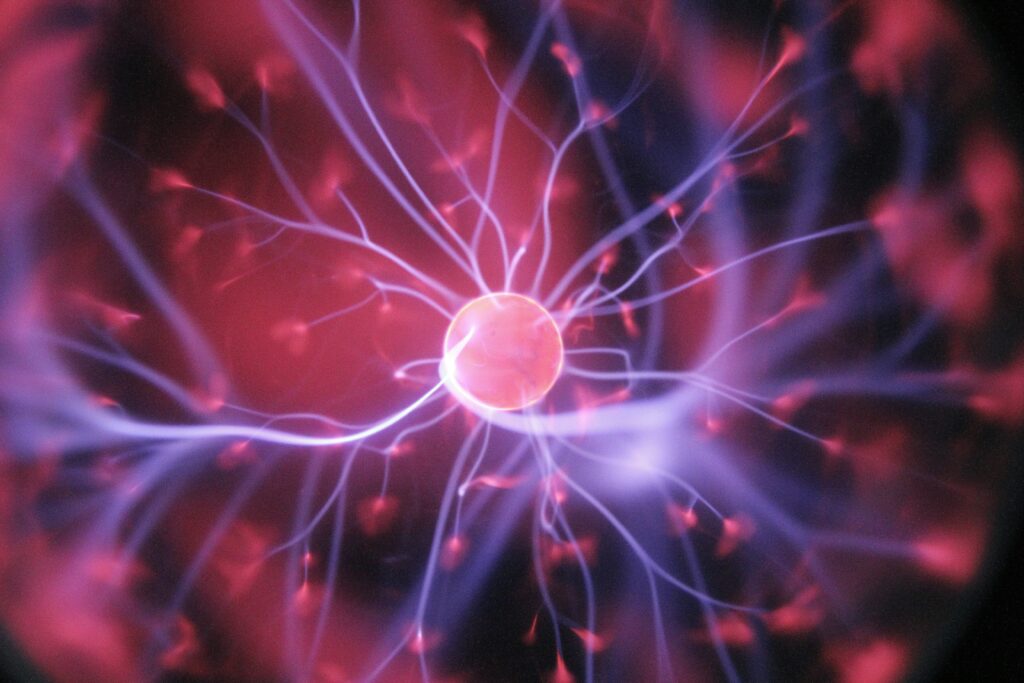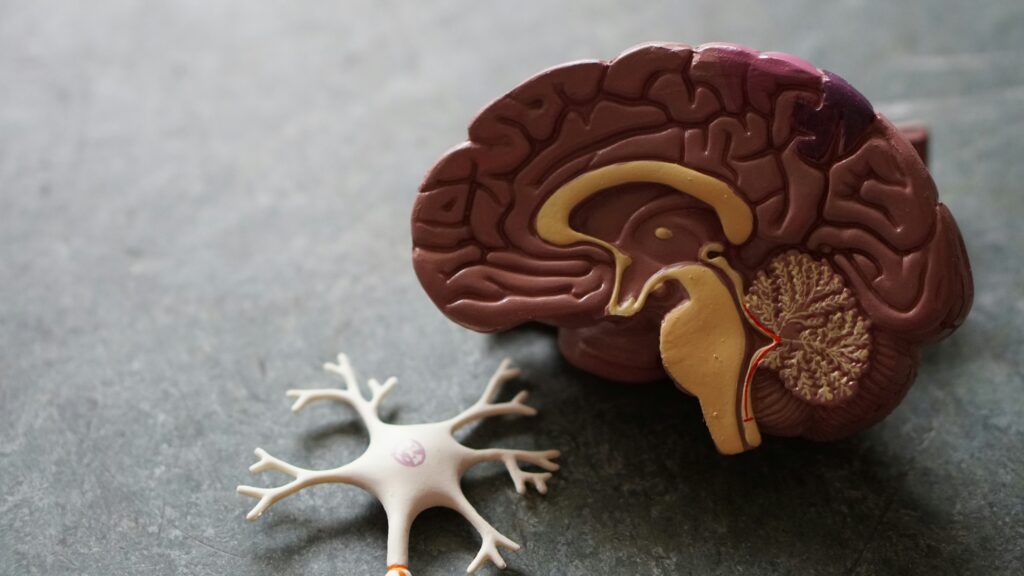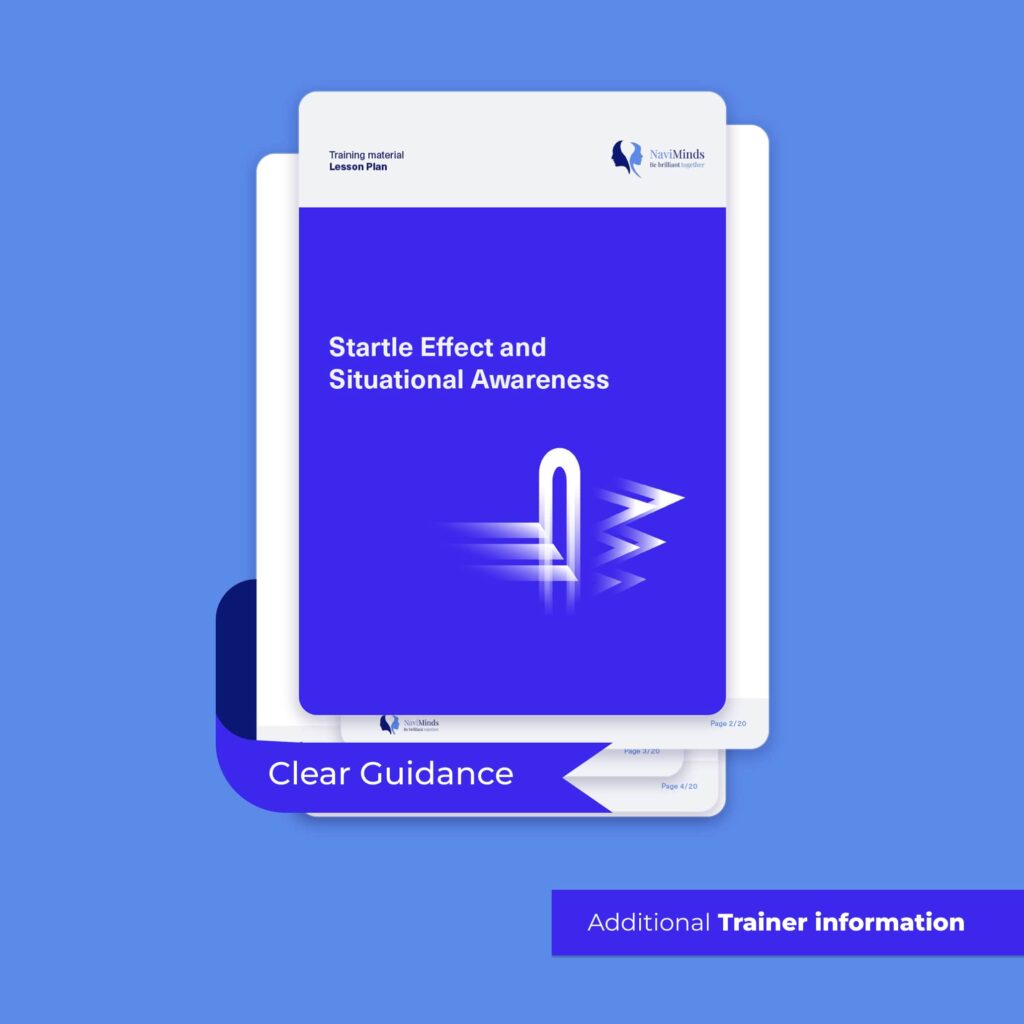
An Amygdala Hijack occurs when our amygdala, the part of the brain responsible for emotions, overpowers our rational brain regions.
Psychologist Daniel Goleman first introduced this term. He described it as an immediate, overwhelming response to a situation that seems far more extreme than the actual event.
Think back to a tennis match where you were losing. After a particularly disappointing play, your frustration boiled over. You couldn’t control your anger, and in a fit of rage, you launched your racket across the court. Or the times when something as simple as a stubborn can refused to open. Ending with you slamming it down on the counter in a fit of irritation.
These instances are classic examples of your amygdala hijacking your rational brain.
In this article, we dive deep into the mechanisms in the brain that trigger an amygdala hijack, the symptoms often associated with it, and three methods to prevent it from happening to you.
The amygdala is our multiple emotional response hub. This small, almond-shaped structure is deep within the brain’s limbic system. It is positioned near the temporal lobes but closer to the forehead than the hippocampus.
Despite its modest size, the amygdala plays a critical role in our emotional lives. It is responsible for detecting and prioritising which aspects of our environment are important based on their emotional significance. This function is vital for experiencing all emotions.
The amygdala also helps us learn from our past experiences. It uses memories related to current events to inform our reactions and decisions. For example, if a previous situation caused fear, the amygdala helps us recognize similar dangers in the future. It prepares our bodies to respond appropriately through the fight-or-flight response. This automatic response involves no conscious effort but is a consequence of the amygdala perceiving a threat and triggering the release of stress hormones to prepare our bodies for action.

To understand an amygdala hijack (also called a limbic hijack), we need to focus on the role of the frontal lobes. This part of the brain regulates voluntary actions such as reasoning, thinking, decision-making, and planning. The frontal lobes allow you to assess your emotions and respond consciously through experience and judgment. Unlike the amygdala, these responses are intentional and not automatic.
Under mild or moderate threats, the frontal lobes can often override the amygdala, allowing you to handle the situation rationally. However, in the face of severe threats, the amygdala may activate the fight-or-flight response. The emotional brain (limbic system) processes information milliseconds before the rational brain, acting immediately if it recognizes a threat. If no threat is recognized, the amygdala will follow the neocortex’s lead, guiding a more measured response.
Our ancestors developed this rapid response system to handle physical threats, releasing stress hormones to prepare the body to confront the danger or flee from it.
Today, however, we don’t face the same physical threats as our ancestors. I, for example, have never seen a saber-toothed tiger despite the millions my ancestors dealt with. Instead, the threats we encounter today are more emotional, such as work pressures, depression, and social anxiety.
The problem?
The amygdala can’t distinguish between a physical and an emotional threat. This means that even though it’s not a saber-toothed tiger, an emotional threat will trigger the same immediate reaction to stressors like a sudden issue at work before the frontal lobes have a chance to engage and apply rational thought.
Discover all our aviation-related topics.
The symptoms of a limbic hijack stem from the body’s chemical response to stress. During stressful situations, your brain releases two essential hormones: cortisol and adrenaline. These hormones prime your body for a fight-or-flight response.
Here’s how these stress hormones affect your body when triggered:
As a result of these hormonal changes, you may notice several physical symptoms, including:
These responses are all part of the body’s natural defence, gearing you up to either confront the threat or escape.

Under normal circumstances, sensory information from our environment is sent to the thalamus – a primitive part of the brain that acts as a relay station.
The thalamus then forwards this information to the frontal lobes of the cortex, which are centers for higher brain functions like perception, decision-making, and the use of words. The cortex processes this sensory information, applies logical reasoning, and then sends the processed signals to the amygdala.
The amygdala generates appropriate emotional responses, releasing hormones and enzymes that provoke the corresponding emotions and actions.
When the sensory information identifies a real but non-serious threat, the frontal lobes usually manage the response, resulting in a considered and rational reaction. However, in cases of an amygdala hijack, this process changes dramatically. While the sensory input still reaches the thalamus, it quickly determines that engaging the cortex for logical reasoning would be a waste of time. So, it bypasses the cortex and sends the information directly to the amygdala, prompting an immediate reaction necessary for survival.
This swift redirection initiates the fight-or-flight response even before the cortex can intervene. The ensuing release of stress hormones, such as adrenaline and cortisol, rapidly prepares the body for action.
With the frontal lobes sidelined, rational thinking ceases momentarily, which explains why people often feel incapable of ‘thinking’ when overwhelmed by emotion.
When caught in a limbic hijack, our options for getting out are limited – any solution essentially requires reactivating the frontal lobes.
For instance, slowing your breathing can be an effective tool; however, during the peak of a hijack, even thinking, “I’m unreasonably upset, I need to slow down my breathing,” would require active cognitive processing, which is challenging when the neocortex has checked-out.
This doesn’t mean we should resign ourselves to the fate of our reactive minds. Fortunately, there are things we can do to avoid reaching a full-blown amygdala hijack.

This practice has proven essential in managing bodily responses during emotional peaks. Mindfulness helps you assess your feelings and the stimuli around you, allowing for a more rational and logical response. Essentially, it shifts control from the amygdala back to the frontal cortex. A significant 2018 brain scan study revealed that long-term meditators showed reduced amygdala activation when exposed to negative stimuli. Furthermore, newcomers to meditation demonstrated increased connectivity between the amygdala and the ventromedial prefrontal cortex after just eight weeks, enhancing goal-tracking and self-regulation.
General stress management can preempt amygdala hijacks by helping individuals recognize and respond to minor or significant triggers. Identifying when daily stressors become chronic stress is crucial for developing effective management strategies. Techniques can range from immediate methods like breathing exercises, which offer quick relief, to long-term habits such as regular physical activity, meditation, and journaling.
Physically altering your environment in stressful situations can help reactivate the cognitive functions of your brain. Moving around or taking a brief break from a stressful situation can provide the mental space needed to view things from a more rational perspective.
Implementing these strategies helps handle immediate reactions during stressful situations and builds a foundation for long-term emotional resilience.
At NaviMinds, we introduce the concept of a limbic hijack using a model called the “Triune Brain” developed by neuroscientist Paul MacLean. The model divides the brain into three distinct layers: the primitive “reptilian brain” that governs basic survival functions like breathing and heartbeat; the limbic system, which is the epicenter of our emotions and houses the amygdala; and the uniquely human neocortex, responsible for abstract, creative, and analytical thinking.
During our training sessions, I draw this triune brain on a whiteboard to visually represent these layers.
I then ask: “Which layer influences the other?”
It’s evident that our reptilian brain significantly impacts our emotional state (limbic system), which in turn affects our cognitive processes (neocortex). For instance, being hungry or tired can make us irritable and impatient, altering our decision-making capabilities.
But can the influence flow in the opposite direction?
Can rational thought override our emotional impulses or even control basic physiological responses?
Here’s where it gets complex.
Consider this: Can you simply decide not to feel nervous before a big presentation? or could you tell your metabolism to speed up and prevent any weight gain from that slice of cake?
The reality is that such direct control is challenging.
However, there is a gateway to influencing our reptilian brain and by that our limbic system: through controlled breathing.
While I might not be able to slow down my heart rate directly through thought alone, I can choose to breathe more slowly or quickly right now as I’m sitting here writing this – with rational thought alone.
This control over our breath is a powerful tool in mitigating an amygdala hijack, providing a practical strategy to regain composure and think clearly during high-stress moments.
This discussion illuminates the limitations and capabilities of our brain’s different layers and equips your students with a deeper understanding of how to manage an amygdala hijack effectively.

Get the proper tools to conduct an effective lesson on an amygdala hijack with our comprehensive and ready-to-use lesson plan on the “Startle Effect”.
Our lesson plan introduces the startle response and highlights its mental and physiological impacts in high-pressure environments. It also provides a small interactive exercise designed to simulate the experience of being startled, helping students feel firsthand the sudden impact such stimuli can have on both body and mind.
Ready to start conducting impactful crew resource management training today?
Dive into our insightful and informative articles that will help you explore more and get ahead of the competition.
© 2024 NaviMinds – Designed by Aveo web&marketing